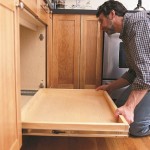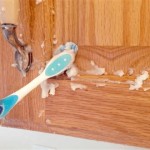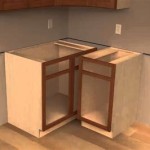Stain Unfinished Kitchen Cabinets: A Comprehensive Guide
Unfinished kitchen cabinets offer a versatile and budget-friendly option for homeowners looking to customize their kitchens. However, staining unfinished kitchen cabinets requires a thorough understanding of the process and materials involved. This article will delve into the essential aspects of staining unfinished kitchen cabinets, providing a comprehensive guide to help you achieve professional-looking results.
Choosing the Right Stain
The choice of stain determines the final appearance of your cabinets. Consider the desired color, finish, and durability when selecting a stain. Here are some factors to keep in mind:
- Oil-based stains: Penetrate deeply into the wood, providing a rich and durable finish with a wide range of colors available.
- Water-based stains: Dry quickly and raise the grain of the wood, resulting in a more rustic or weathered look. They are typically easier to apply and clean up.
- Gel stains: Form a thick layer on the surface of the wood, offering intense color and minimal grain raising. They are suitable for hiding imperfections.
Preparing the Cabinets
Before staining, the cabinets must be properly prepared to ensure a smooth and even finish. The following steps are crucial:
- Sanding: Use fine-grit sandpaper (120-150 grit) to smooth the surface of the cabinet doors and frames. Remove any dirt or debris.
- Cleaning: Wipe down the cabinets with a tack cloth to remove sanding dust and impurities.
- Mask off areas: Protect areas that you do not want to stain, such as hardware or countertops.
Applying the Stain
Apply the stain evenly using a brush, sponge, or cloth, following the grain of the wood. Here are some tips:
- Test the stain: Apply a small amount to an inconspicuous area to test the color and finish.
- Thin the stain: If the stain is too thick, thin it with a compatible solvent (such as paint thinner for oil-based stains or water for water-based stains). This will make it easier to apply and control the color.
- Wipe off excess: After applying the stain, wipe off any excess with a clean cloth or paper towel. This will help prevent streaks or blotches.
- Allow to dry: Allow the stain to dry completely before applying additional coats or proceeding to the next step.
Finishing the Cabinets
Once the stain has dried, you can finish the cabinets with a clear finish to protect and enhance the color. Here are the options:
- Polyurethane: Forms a tough and durable finish with a glossy, semi-gloss, or matte sheen.
- Lacquer: Provides a high-gloss finish that is moisture-resistant.
- Wax: Penetrates the wood and provides a natural, matte finish that is easy to maintain.
Tips for Staining Unfinished Kitchen Cabinets
- Use a brush with natural bristles (such as badger hair) for oil-based stains and synthetic bristles for water-based stains.
- Apply the stain in thin, even coats to avoid drips or streaks.
- Sand between coats of stain to smooth the surface and create a more uniform finish.
- Wear gloves and a respirator when staining with oil-based products.
- Allow ample drying time between coats and before using the cabinets.
Conclusion
Staining unfinished kitchen cabinets is a rewarding project that can transform the look of your kitchen. By understanding the essential aspects of the process and following these guidelines, you can achieve professional-looking results that will enhance the beauty and functionality of your home.

How To Stain Unfinished Cabinets Painting By The Penny

Unfinished Cabinets Pros Cons And Guide

Unfinished Kitchen Cabinets Pictures Options Tips Ideas

Kitchen Renovation Unfinished Oak Cabinets

How To Stain Unfinished Cabinets Painting By The Penny

All You Need To Know About Unfinished Cabinets Cc

Kitchen Renovation Unfinished Oak Cabinets

How To Make Rustic Kitchen Cabinets By Refinishing Them The Best Stain Color Amanda Katherine

How To Stain Unfinished Cabinets Painting By The Penny

Hampton Bay 24 In W X 12 D 30 H Assembled Wall Kitchen Cabinet Unfinished With Recessed Panel Kw2430 Uf The Home Depot
Related Posts








